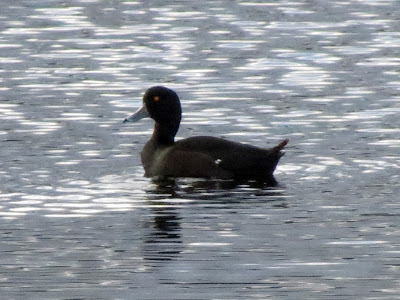Welcome to the Midnight Collective Broadsheet 91
Actively
supporting NZ’s endangered wetland birds
 |
| Critically endangered Parera pair - Raumati Beach dune lake |
One of the more ignoble stories of New
Zealand conservation is that concerning the plight of our local native duck
–parera. Mallards were initially introduced from England at the turn of the 20th Century, probably in response to colonial homesickness (a yearning for their green-headed
duck), but then banned when it was realised that they were interbreeding with
the local species. This ban was overturned in the late thirties following pressure
from the Colonial Ammunition Company and the gun lobby. 30,000 eggs were brought
into the country from the US and the hatched birds liberated, usually close to
towns and cities, by the forerunner of Fish & Game.
 |
| Mallard pair |
The result is that parera are now
critically endangered, and because they migrate between here, Australia and the
Pacific Islands, they have spread the contagion there too. Nothing is being
done about this debacle in New Zealand and this critically endangered bird can be
legally be shot for sport (like the African lions, rhino’s and hippos that have
been so much in the news). The Australians however, have culled 72% of their
New Zealand mallard immigrants on Lord Howe Island in an effort to protect
their native ducks.
We paid a lot of attention to parera at
the dune lake (this lake has now been completely destroyed), because pure-bred
parera kept visiting the lake and a small colony of parera-cross birds had
settled there. These were wild birds and we concentrated our attention on them
as we began to find differences in behaviours, between the species.
Our first surprise was to see parera-cross
males staying with their mates while they raised their ducklings. They seemed
rather bewildered by the ducklings and were kept under close watch by the females,
but some were obviously protective.
 |
| Parera cross pair with chicks |
This was very different to mallards, who often
prowl in male gangs, especially through October-November; then think nothing of sexually
assaulting a female intent on guarding her brood.
 |
| Parera-cross male standing lookout on female and ducklings |
Then there were further behavioural
anomalies. There appeared to be a
racial bias operating with mallard because they didn’t seem to tolerate grey-headed
males in their gangs. The females however showed no similar prejudice against
parera males.
But this is a difficult area in which to make
reliable observations for a number of reasons. These behaviours vary amongst
individuals and here is a good anomaly. Last year a single male parera (pure bred) settled
at the lake through spring and early summer. He made no attempt to join in with
the resident mallards, but happily paired up with at least two of their females, (not at the same time). He obviously formed
bonds and they could often be seen sitting together. (He pal'd up with the second when the first hen had disappeared onto a nest). It became clear that they
had mated when the dune lake dried early. The females took their
ducklings down onto the Wharemauku and many of these youngsters grew up to display
the green wing inflection, typical of parera. He didn’t stick around with his
mate, but this had been a difficult year with the lake drying very early, but then
coming back again in December. This may have been a factor.
 |
| Parera-cross hapu - Raumati Beach dune lake |
Pure bred couples however have also paired up at the lake down here, and then breeding because we discovered this female with
three adolescent youngsters on the Wharemauku.
 |
| Parera female with juveniles -Wharemauku |
To Be Continued
Track we were listening to today just had to be -You Never Can Tell - Chuck Berry of course...though The Phoenix Foundation did a stompy version of this classic Berry knees up, at the Raumati South Hall not so many years ago...It was full of old people and kids - Oh and some not so old....
They bought a souped-up jitney,
'twas a cherry red '53,
They drove it down New Orleans
to celebrate their anniversary
It was there that Pierre was married
to the lovely mademoiselle
"C'est la vie", say the old folks,
it goes to show you never can tell
























